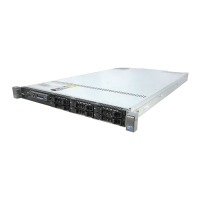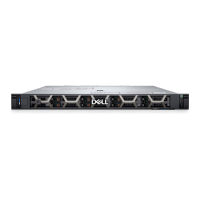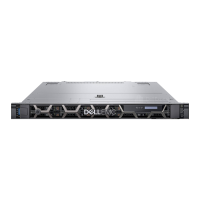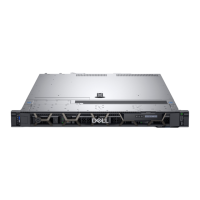Table 17. Static and sliding rails
Sliding and static rail
Product Rail identier Mounting
interface
Rail type Rack types supported
4-Post 2-Post
Square Round Thread Flush Center
R640 B6 ReadyRails II Sliding √ √ √ X X
B4 ReadyRails Static √ √ √ √ √
Screws are not included in either kit as threaded racks are oered with various thread designations. Users must therefore provide their own
screws when mounting the rails in threaded racks.
NOTE: Screw head diameter for the sliding rails must be 10 mm or less.
Other key factors governing proper rail selection include the following:
• Spacing between the front and rear mounting anges of the rack
• Type and location of any equipment mounted in the back of the rack such as power distribution units (PDUs)
• Overall depth of the rack
The static rails oer a greater adjustability range and a smaller overall mounting footprint than the sliding rails. This is because of their
reduced complexity and lack of need for CMA support.
Table 18. Static rails adjustability
Product Rail
identier
Rail type Rail adjustable range (mm) Rack types supported Rail depth—mm
Square Round Threaded Without
CMA
With CMA
Min Max Min Max Min Max
R640 B6 Sliding 630 883 616 876 630 897 714 845
B4 Static 608 879 594 872 604 890 622 N/A
The adjustment range of the rails is a function of the type of rack in which they are being mounted. The Min/Max values listed above
represent the allowable distance between the front and rear mounting anges in the rack. Rail depth without the CMA represents the
minimum depth of the rail with the outer CMA brackets removed (if applicable) as measured from the front mounting anges of the rack.
Rack rails
31
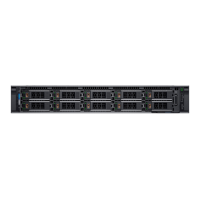
